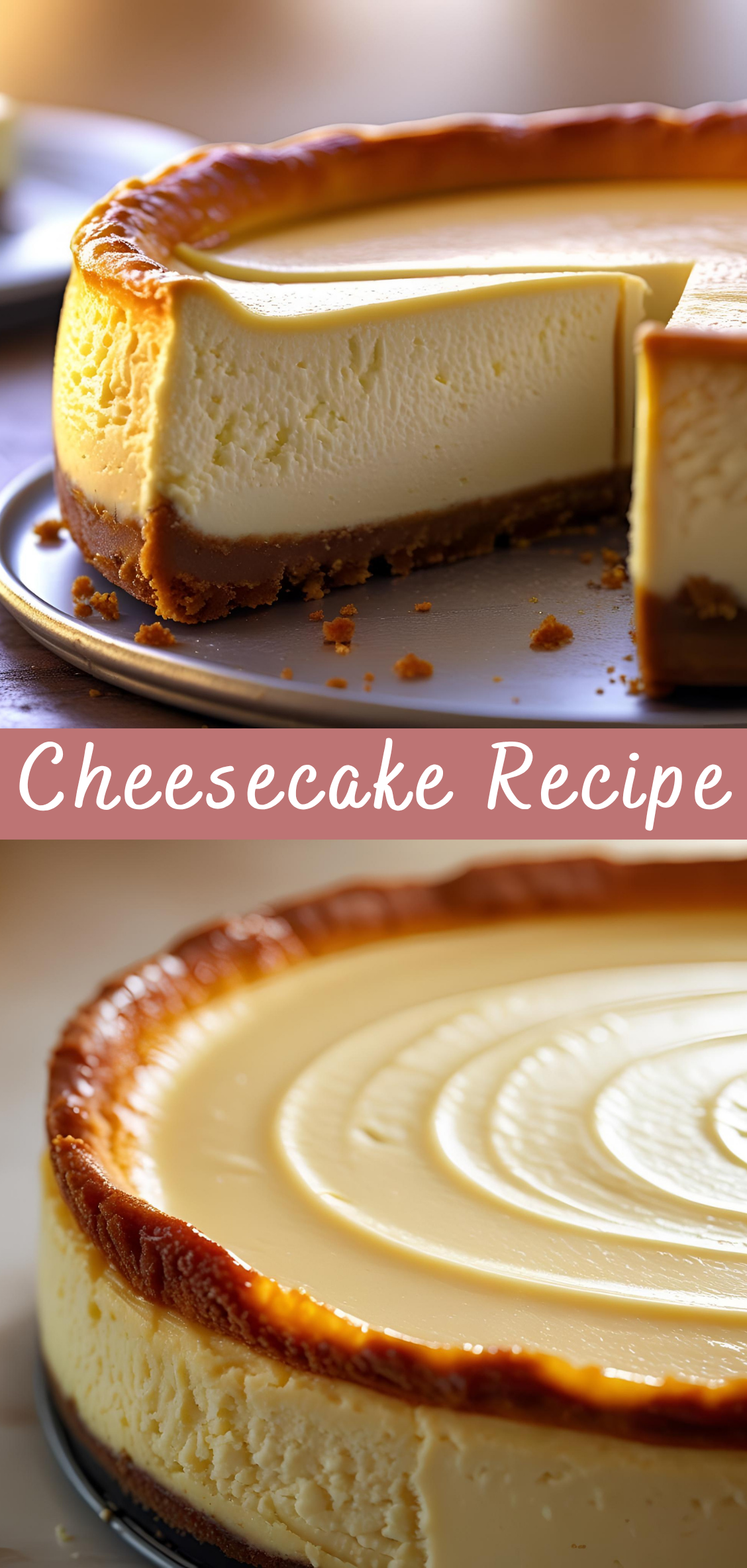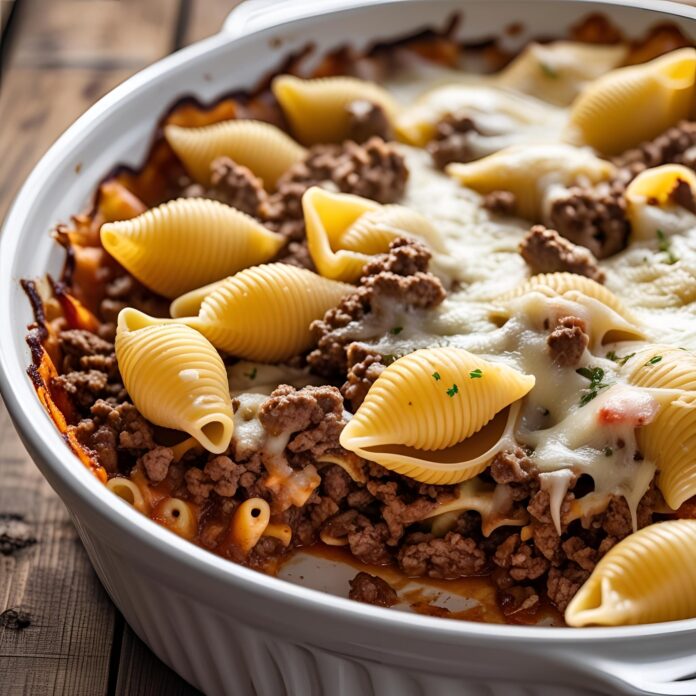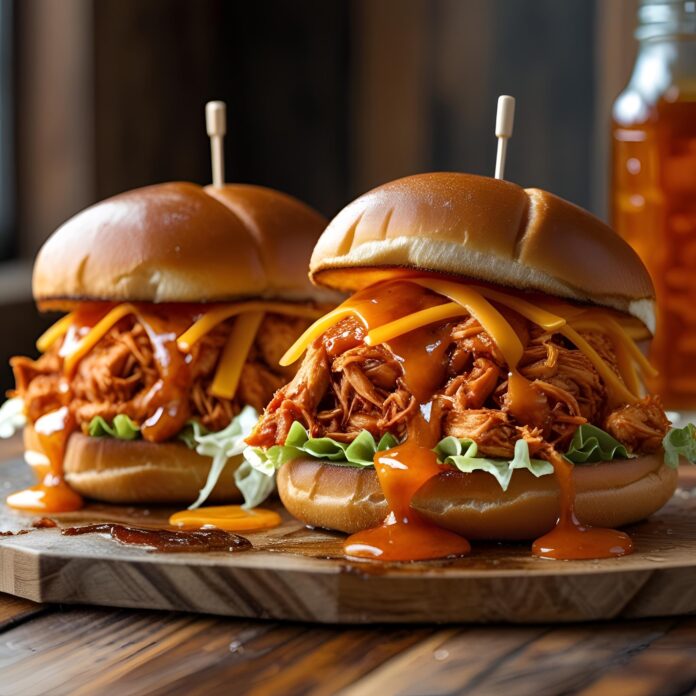Cheesecake Recipe
Cheesecake has long held a place of honor in the world of desserts. Rich, smooth, and decadently creamy, it straddles the line between rustic comfort and refined indulgence. Whether enjoyed plain, topped with fruit, swirled with chocolate, or layered with complex flavors, cheesecake is more than just a dessert—it’s an experience.
There is something undeniably luxurious about a well-made cheesecake. It’s the kind of dessert that turns heads at dinner parties, earns gasps of delight at birthdays, and draws a line at every bakery case. From the dense, towering slices of classic New York style to the feather-light texture of a Japanese soufflé cheesecake or the simplicity of a no-bake version in a summer pie, this dessert adapts to every occasion, climate, and craving.
But despite its fame, cheesecake is often misunderstood. Some home bakers see it as intimidating—prone to cracks, overly dense, or difficult to perfect. Others may associate it only with the overly sweet, store-bought varieties that lack the depth and character of a well-executed homemade version. The truth is, when done correctly, cheesecake is both forgiving and incredibly satisfying to make.
In this guide, we’re diving deep into the world of cheesecake. You’ll learn not only how to make a classic cheesecake from scratch but also how to adjust it to your taste, troubleshoot common problems, and impress even the pickiest dessert connoisseur. We’ll explore the chemistry behind the perfect texture, the role of each ingredient, and how to get that flawless, creamy consistency every single time.
Whether you’re a first-time baker or a seasoned home chef looking to refine your technique, this comprehensive guide will give you all the tools, tips, and knowledge to master cheesecake. From choosing your crust to slicing the perfect piece, you’re about to enter a world of dessert decadence and baking satisfaction.
Let’s begin with a bit of background that adds depth to your dessert knowledge: the history and science behind cheesecake.
Step-by-Step Instructions: Classic New York Cheesecake
This recipe includes three essential components:
-
The crust – buttery and crisp, usually made with graham crackers
-
The filling – creamy, tangy, and dense but smooth
-
The baking process – slow, steady, and crucial for the texture and appearance
✦ Ingredients
For the Crust:
-
1 ½ cups (150g) graham cracker crumbs (about 12 full sheets)
-
2 tablespoons granulated sugar
-
½ teaspoon cinnamon (optional)
-
6 tablespoons (85g) unsalted butter, melted
For the Cheesecake Filling:
-
4 (8 oz) blocks cream cheese, softened to room temperature (total: 32 oz / 900g)
-
1 ¼ cups (250g) granulated sugar
-
1 cup (240g) sour cream, room temperature
-
4 large eggs, room temperature
-
2 teaspoons vanilla extract
-
1 tablespoon lemon juice (freshly squeezed)
-
2 tablespoons all-purpose flour (optional, for stability)
For the Water Bath:
-
Boiling water
-
Heavy-duty aluminum foil
-
Roasting pan or deep baking dish
Step 1: Prepare the Pan and Preheat
-
Preheat the oven to 350°F (177°C).
-
Line the bottom of a 9-inch springform pan with parchment paper.
-
Tightly wrap the outside of the pan in 2–3 layers of heavy-duty aluminum foil to protect against water leakage during the water bath.
Step 2: Make the Crust
-
In a medium bowl, combine graham cracker crumbs, sugar, and cinnamon.
-
Pour in the melted butter and stir until the crumbs are fully coated and look like wet sand.
-
Press the mixture firmly into the bottom of the pan using the bottom of a measuring cup or glass.
-
Bake for 10 minutes at 350°F (177°C), then remove from the oven and let cool slightly.
-
Reduce oven temperature to 325°F (163°C) for the next step.
Tip: If you like a crispier crust, bake for 12 minutes instead of 10.
Step 3: Prepare the Filling
-
Place softened cream cheese in a large mixing bowl or stand mixer.
-
Beat on medium speed for 2–3 minutes until completely smooth—no lumps!
-
Add granulated sugar and continue mixing for another 1–2 minutes, scraping the bowl as needed.
-
Add sour cream, lemon juice, and vanilla. Mix on low until just combined.
-
Add eggs one at a time, mixing on low after each addition. Do not overbeat.
-
If using, mix in the flour last, just until combined.
Important Tip: Keep the mixer on low speed after adding eggs to avoid incorporating excess air, which can cause cracking.
Step 4: Assemble and Prepare Water Bath
-
Pour the batter over the cooled crust in your prepared springform pan.
-
Tap the pan gently on the counter to release any large air bubbles.
-
Place the foil-wrapped springform pan into a large roasting pan.
-
Carefully pour boiling water into the roasting pan until it reaches about halfway up the side of the springform pan.
Why the water bath?
This protects the cheesecake from direct heat, helping it bake slowly and evenly, preventing cracks, and maintaining a silky texture.
Step 5: Bake Low and Slow
-
Carefully transfer the water bath and cheesecake to the oven.
-
Bake at 325°F (163°C) for 1 hour and 10 minutes to 1 hour and 20 minutes.
-
The edges should be set, but the center will still have a slight jiggle like firm Jell-O.
-
When done, turn off the oven. Leave the cheesecake inside with the door slightly cracked for 1 hour to cool slowly.
Tip: Slow cooling helps prevent sudden temperature changes that cause cracking.
Step 6: Chill Completely
-
After the 1-hour oven cool, remove the cheesecake from the water bath.
-
Let it cool at room temperature for another 1 hour.
-
Cover the cheesecake (still in the pan) and refrigerate for at least 6 hours, preferably overnight.
Tip: Do not skip the chilling. It helps the texture set and flavors develop fully.
Step 7: Release and Serve
-
Run a thin knife around the edges of the pan before unclipping the springform.
-
Gently transfer the cheesecake to a cake plate or keep it on the base.
-
Slice with a thin, sharp knife cleaned with warm water between each cut.
-
Serve plain or with desired toppings.
Optional Topping Ideas
-
Fresh berries (strawberries, blueberries, raspberries)
-
Cherry or strawberry pie filling
-
Lemon curd
-
Salted caramel drizzle
-
Chocolate ganache or chocolate curls
-
Whipped cream with citrus zest
Cheesecake Recipe
Cheesecake has long held a place of honor in the world of desserts. Rich, smooth, and decadently creamy, it straddles the line between rustic comfort and refined indulgence. Whether enjoyed plain, topped with fruit, swirled with chocolate, or layered with complex flavors, cheesecake is more than just a dessert—it’s an experience.
Ingredients
- For the Crust:
- 1 ½ cups (150g) graham cracker crumbs (or digestive biscuits)
- 1/4 cup (50g) granulated sugar
- 6 tbsp (85g) unsalted butter, melted
- Pinch of salt
- For the Filling:
- 4 (8 oz) packages cream cheese, softened (32 oz / 900g)
- 1 cup (200g) granulated sugar
- 1 cup (240g) sour cream or heavy cream
- 4 large eggs
- 1 tbsp lemon juice (optional, enhances flavor)
- 1 tsp vanilla extract
- 2 tbsp all-purpose flour (optional for a firmer texture)
Instructions
1. Prep the Crust:
- Preheat oven to 325°F (160°C).
- In a bowl, mix graham cracker crumbs, sugar, melted butter, and salt until it resembles wet sand.
- Press mixture firmly into the bottom (and slightly up the sides) of a 9-inch springform pan.
- Bake crust for 10 minutes. Set aside to cool. Wrap pan with foil if using a water bath later.
2. Make the Cheesecake Filling:
- In a large bowl or mixer, beat softened cream cheese until smooth and creamy (no lumps!).
- Add sugar and mix until combined.
- Mix in sour cream, vanilla, and lemon juice.
- Add eggs one at a time, mixing on low speed after each just until combined.
- Optional: Mix in flour for a slightly denser texture.
3. Bake the Cheesecake:
- Pour filling over cooled crust. Tap the pan to release air bubbles.
- Place the pan in a larger roasting pan. Pour hot water into the roasting pan to come halfway up the sides of the springform (water bath helps prevent cracks).
- Bake for 55–70 minutes, or until the edges are set but the center still has a slight jiggle.
4. Cool and Chill:
- Turn off oven, crack door open, and let cheesecake cool in the oven for 1 hour.
- Remove from oven, cool completely at room temperature.
- Cover and refrigerate at least 4 hours or overnight.
5. Serve:
- Run a knife around the edge before releasing springform.
- Slice with a clean, warm knife.
- Serve plain or with toppings: fresh berries, fruit compote, chocolate ganache, caramel sauce, etc.
Notes
- Don’t overmix the batter once eggs are added to avoid cracks and air bubbles.
- If skipping the water bath, bake at 300°F and be prepared for possible surface cracks (still delicious!).
- Cheesecake can be frozen up to 2 months—wrap tightly and thaw overnight in the fridge.
- For flavored variations (e.g., chocolate, pumpkin, or lemon), let me know and I can customize it.


